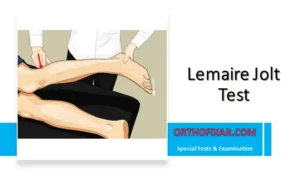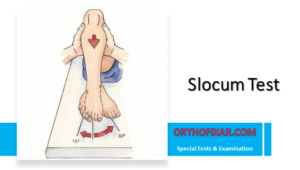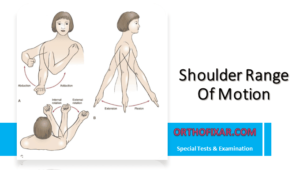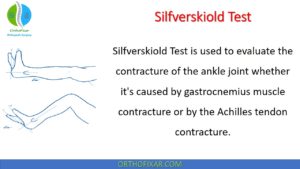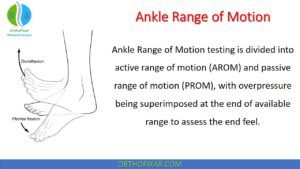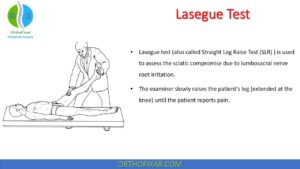Sign of the Buttock Test

The Sign of the Buttock Test is a clinical examination used to differentiate between pathology in the hip joint or pelvis and pathology in the lumbar spine or hamstring muscles.
This test helps determine whether limitation of hip flexion is due to:
- A musculoskeletal cause such as hamstring tightness or lumbar spine dysfunction, or
- A serious intra-pelvic or buttock lesion such as a bursitis, abscess, tumor, or other space-occupying pathology posterior to the hip joint.
The buttock region contains several structures that, when pathological, can restrict hip movement:
- Bursae (particularly the ischial and trochanteric bursae)
- Soft tissues posterior to the hip joint
- Potential spaces where abscesses may form
- Areas susceptible to neoplastic growth
When pathology exists in these deeper buttock structures, it creates a mechanical restriction to hip flexion that persists regardless of knee position.
See Also: Lumbar Spine Anatomy
How to Perform the Sign of the Buttock Test?
- The patient lies supine on the examination table.
- The examiner performs a passive unilateral straight leg raise (SLR) on the affected side.
- If hip flexion is restricted and painful, the examiner notes the limitation.
- The examiner then flexes the knee while maintaining hip flexion.
- This movement relaxes the hamstring muscles and should allow greater hip flexion if the restriction originates from the lumbar spine or hamstrings.

What does a Positive Sign of the Buttock Test Mean?
Negative Sign of the Buttock: When the hip flexion increases after the knee is flexed. This indicates the limitation is due to hamstring tightness or lumbar spine involvement, not a problem in the hip or pelvis.
Positive Sign of the Buttock: When the hip flexion does not increase even after flexing the knee. This suggests a pathology located posterior to the hip joint, such as:
- Ischial bursitis
- Gluteal abscess
- Neoplasm (tumor)
- Septic arthritis of the hip
- Fracture or infection involving the ischium or pelvis
In addition, the patient typically shows a noncapsular pattern of hip restriction, meaning the pattern of movement loss does not match that seen in classic capsular involvement (e.g., osteoarthritis).
A positive Sign of the Buttock is a red flag finding. It indicates the presence of a serious underlying pathology requiring immediate further investigation, such as imaging (MRI or CT) and appropriate medical referral.
Summary Table
| Finding | Result | Indicates |
|---|---|---|
| Hip flexion increases when knee flexed | Negative | Lumbar spine or hamstring involvement |
| Hip flexion does not increase when knee flexed | Positive | Pathology in the buttock or hip region (serious lesion) |
Clinical Pearls
- Always compare findings bilaterally
- Document the specific range of motion limitations
- Look for accompanying signs: fever, night pain, unexplained weight loss, or systemic symptoms
- A positive test should prompt immediate further investigation—do not dismiss as simple musculoskeletal pain
- The presence of a non-capsular pattern strengthens the significance of positive findings
- Consider the patient’s history: recent trauma, infection, cancer history, or immunocompromised status.
The Sign of the Buttock test should be part of a comprehensive hip and lumbar spine examination, including:
- Range of motion assessment (active and passive)
- Capsular pattern evaluation
- Neurological screening
- Palpation for masses, warmth, or tenderness
- Gait analysis
References & More
- Waddell G, McCulloch J, Kummel E. Nonorganic physical signs in low back pain. Spine. 1980;5: 117–125. PubMed
- Gurney B, Boissonault WG, Andrews R. Differential diagnosis of a femoral neck/head stress fracture. J Orthop Sports Phys Ther. 2006;36:80–88. PubMed
- Burns SA, Burshteyn M, Mintken PE. Sign of the buttock following total hip arthroplasty. J Orthop Sports Phys Ther. 2010 Jun;40(6):377. doi: 10.2519/jospt.2010.0410. PMID: 20511697. PubMed
- Orthopedic Physical Assessment by David J. Magee, 7th Edition.



